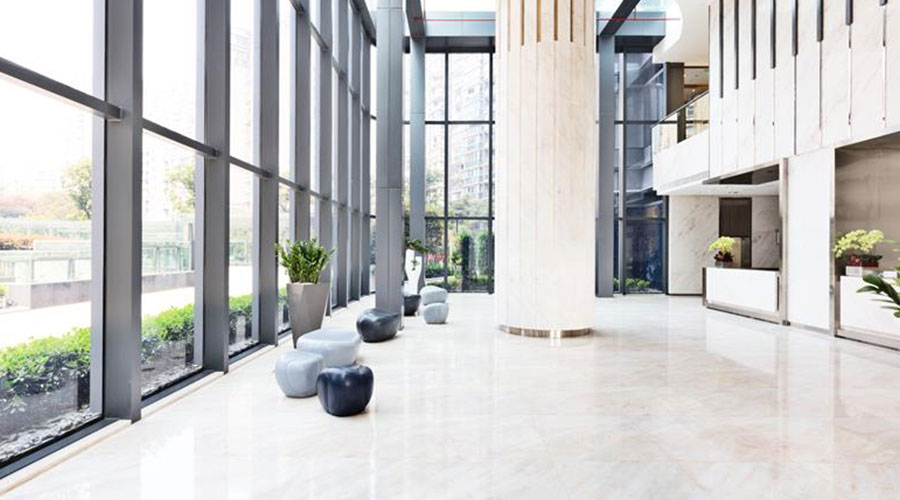Healthcare Design Trends to Watch in 2025

As a new year approaches, there will be a shift in trends.
Trends have never come and went faster than they have in recent years. Sure, we can blame TikTok and social media for being a catalyst of microtrends, but it’s not just fashion and lifestyle products that are rapidly changing to keep up with consumers’ desires. Hospitals and other healthcare facilities are shifting their design approach to be more appealing to patients and their families.
Currently, 80 percent of counties in the U.S. are in a “healthcare desert.” Access to healthcare has never been more challenging, causing decreases in primary care visits and an increase in deaths as people struggle to get to a hospital within the “golden hour” of treatment. Brett Paloutzian, Healthcare Sector Business Leader, HED predicts that accessibility will be more prominent in the coming year.
“We’re seeing more money going towards building clinics of all sizes, which is helping to increase access to care. Previously, there was a surge of ambulatory care centers, but now there’s a larger push for smaller clinic spaces that can be spread out in communities, making it more convenient and accessible for patients.”
Knowing that more facilities are on the horizon, many designers have approached these projects with patients in mind. Paloutzian predicts that greater personalization of facilities will be one of the biggest trends to emerge in the new year.
“Currently, there’s not much attention being paid to communal spaces such as waiting room environments or dietary spaces, but that will certainly change as we head into 2025 and beyond,” Paloutzian says. “One thing we’ll start to see is the increased emphasis on community within dietary spaces. Incorporating larger, community tables so families can have a family dinner is one way to do this.”
Meanwhile, waiting rooms will serve more as a “family room” on hospital floors, offering a smaller and cozier experience. Paloutzian predicts that more couches will be incorporated into designs and that these spaces will be more accessible to food and drinks. This allows for a more comfortable waiting experience while patients can heal in their rooms without being crowded with visitors all at one time.
Flexible design will also be an emerging trend in 2025. Designing a given department with redundant utilities in multiple locations will allow for space to easily convert into another function.
“Converting a floor from patient care to imaging, for instance, is utility intensive and if you have access to utilities in a variety of areas, it will allow for less time in construction,” says Paloutzian. “The other important factor is prepping areas with future IT needs in mind. Space is at a premium in healthcare facilities and designers are always trying to reduce the size of non-patient care rooms, such as IT rooms.”
Despite being a growing trend, not all hospitals are capable of flexible design. Paloutzian explains that most older hospitals were designed with the minimum number of vertical utility chassis, meaning that larger ducts run in tight shafts causing congestion above ceiling spaces. Unfortunately, this doesn’t lead to flexibility. To increase flexibility, hospitals will need to apply open building concepts, which allow for more utility shafts that put utilities closer to where they’re needed most.
“The biggest lesson from the pandemic was the need for flexibility, both in flexible spaces and flexible routing of patients,” says Paloutzian. “For example, HED completed an emergency department renovation right before the pandemic and the design included a discharge lounge. During the pandemic, the hospital used the space for suspected Covid cases which eliminated the need for outdoor tent structures that many other hospitals were forced to use. This flexible space concept will continue into 2025.”
Artificial intelligence will continue to be mainstream in 2025 as it has proven to be beneficial in streamlining operations. In the coming year, it is predicted that the technology will expand to collate larger amounts of healthcare planning information so that managers can ensure the best outcomes. According to Paloutzian, AI will take data and complete calculations almost instantly, saving time and allowing for better predictability and planning.
“One of the best uses of AI is for data and analytics and we’ll see that use case expand in healthcare facilities, especially for operations,” says Paloutzian. “For example, AI can provide valuable insights on occupancy and flow mapping within facilities. Is the average procedure length running longer? Is bed space decreasing? Are average patient stays increasing? AI can gather data-driven insights on each of these questions and use them to create predictability.”
Mackenna Moralez is the associate editor of the facilities market.
The post "Healthcare Design Trends to Watch in 2025" appeared first on Healthcare Facilities Today
 Healthcare FM 5-Day Course - Dubai - Starting 11 September 2022
Healthcare FM 5-Day Course - Dubai - Starting 11 September 2022 
